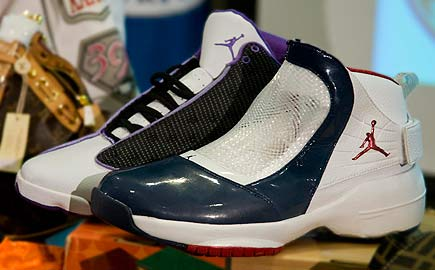Top Counterfeited Goods Seized at Container Ports
| Type of Commodity |
Seizure Value |
% of Total Seizures |
| 10. Toys/Electronic Games | 5.5 million | 2% |
| 9. Jewelry | 10.5 million | 4% |
| 8. Pharmaceuticals | 11.06 million | 4% |
| 7. Media | 11.09 million | 4% |
| 6. Computers/Hardware | 2.54 million | 5% |
| 5. Watches/Parts | 15.53 million | 6% |
| 4. Apparel | 21.46 million | 8% |
| 3. Handbags/Wallets/ Backpacks | 21.50 million | 8% |
| 2. Consumer Electronics | 31.77 million | 12% |
| 1. Footwear | 99.78 million | 38% |
For many consecutive years, counterfeit footwear still remains as the top seized imported product with 38% of total seizures at container ports. Other common counterfeit imports that are seized include consumer electronics, apparel, pharmaceuticals, and toys. Jewelry serves as one of the newer top products on the list at only 4%.

Importing counterfeit and pirated goods threaten the U.S. economy by reducing sales value of authentic goods. These fake products affect the U.S. indirectly by reducing employment, opportunities to participate in research and development and tax revenues. Moreover, these unauthentic goods can endanger the safety of the consumer and the security of the United States if these goods do not meet the quality of the actual products. For example, many fake fragrances contain harmful substances such as urine, bacteria and antifreeze that can be absorbed into the skin and cause irritation or possible fatal allergic reactions. Such products can be a great threat to the consumer’s health.
There were over 14,000 seizures of counterfeit and pirated goods with a total domestic value of over $250 million within the past year. China continues to serve as the number one source country for counterfeit goods that are seized and accounts for 79% of total seizure value. India comes in as number two with 9 percent. The United States Customs and Border Protection is continuing to improve their methods of targeting and searching shipments of counterfeit goods while still assisting with the flow of legitimate trade through the National Intellectual Property Rights (IPR) Coordination Center. IPR aims to focus on identifying businesses that are connected to importing counterfeit goods, auditing to remove counterfeiters of their profits and working with other international agencies to strengthen the IPR enforcement around the world.
For more information on the National Intellectual Property Rights (IPR) Coordination Center, please visit http://www.ice.gov/iprcenter/.
Hong Ho
![]()
Source: Container

